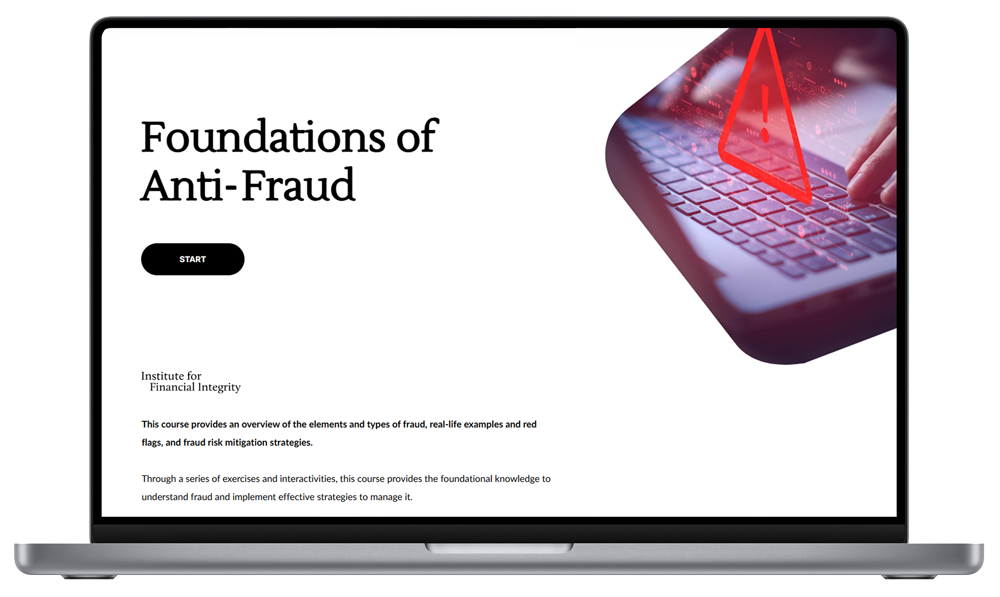When Holiday Cheer Meets Fraud Pressure
What Every Financial Institution Needs to Prepare for this Holiday Season
📅 November 26, 2025
📅 November 26, 2025
December has a way of speeding everything up. People are shopping on their phones between meetings, rushing through airports, sending last-minute gifts, and trying to wrap up work before the year ends. In all that noise, attention drops. Transactions spike. And scammers know it.
They play on emotion because it works. A text about a missing package. A fake alert about a frozen account. A message that looks like it came from a charity you vaguely recognize. When you’re tired or multitasking, it’s easy to tap without thinking twice. That’s exactly the moment the fraudsters wait for.
Every year brings familiar scam patterns, but this season feels different. The volume is higher, the tactics are sharper, and the scams blend into everyday life so well that even cautious customers are slipping up. Here’s what’s coming at financial institutions the fastest.
1. AI-Enhanced Social Engineering
Scammers have always relied on pressure and emotion. Now they’re adding AI on top of it, and that changes the game.
The scams feel personal and urgent, and that’s exactly why they work.
2. Account Takeover Attempts and Retail Impersonation
Account takeover is one of the most predictable holiday threats, and yet it still catches institutions off guard.
Once someone gets into an account, the window to stop the loss reduces.
3. Package Delivery and Shipping Scams
When people are tracking multiple packages, scammers slip in quietly.
It works because everyone’s expecting packages, and nobody wants delays right before the holidays.
4. Romance and Investment Scams During the Holidays
This is the time of year when scammers know people are online more and feeling more open to conversation.
These scams don’t explode overnight. They build slowly, then take everything at once.
5. Fake Charities and Holiday Donation Scams
December is a generous month, and scammers count on that.
What teams should look for is the pattern behind it: new charities with no track record, odd donation spikes, or customers trying to send money to groups that don’t appear anywhere in public registries.
The hardest part about fighting holiday fraud right now is how normal everything looks. A few years ago, you could spot a scam from a mile away. The wording felt off, the story didn’t land, or the email design looked sloppy. Now the messages sound right, the voices sound familiar, and the requests feel believable enough that even careful people get caught in the moment.
On top of that, the pace of life in December works in scammers’ favor. Customers are distracted, juggling travel plans, deliveries, and end-of-year stress. They tap links without thinking, approve alerts because they’re in a hurry, and assume every message about a package or account is legitimate. That’s all the space a fraudster needs.
Inside financial institutions, the pressure looks different but just as intense. Monitoring teams are buried under year-end volume. The alerts keep coming, and they all start to resemble each other. A strange login, a new device, a quick string of small transfers, an urgent call from a customer who “never initiated this.” When fraud patterns evolve faster than the rules written to catch them, small signs slip through.
That’s when the risk shows up in ways leadership can’t ignore. Fraud losses hit the books. Customers start calling. Regulators want to understand why certain patterns weren’t flagged earlier. And suddenly the question becomes less about the scam itself and more about the institution’s readiness.
Were staff trained on current threats, or were they relying on old instincts?
Were escalation paths clear, or did alerts bounce around without action?
Were teams prepared for an AI-driven wave of scams, or were they caught off guard?
December has a way of exposing gaps that stay hidden the rest of the year. It tests governance, communication, and how well frontline teams understand the tactics they’re supposed to identify.
While the holiday season will always bring fraud, it doesn’t have to overwhelm an institution. Clear roles, strong monitoring, and well-trained people reduce risk in a way technology can’t do on its own. December is simply the moment that reveals who invested in readiness and who hoped their systems would be enough.

The good news is that the institutions that stay ahead aren’t doing anything magical. They’re simply investing in awareness, training, and clear playbooks before the surge hits. Tools matter, of course, but they only go so far when customers are distracted and scammers are evolving. What really makes the difference is a team that knows what the new patterns look like and doesn’t hesitate when something feels wrong.
This is where the IFI Foundations of Anti-Fraud course comes in. It gives teams a practical understanding of today’s scam tactics, walks them through real-world scenarios, and builds the instincts they need to respond quickly and confidently during the holiday rush.
That’s how you get through the season with fewer surprises and fewer losses.









This site uses cookies. By continuing to browse the site, you are agreeing to our use of cookies.
Accept settingsHide notification onlySettingsWe may request cookies to be set on your device. We use cookies to let us know when you visit our websites, how you interact with us, to enrich your user experience, and to customize your relationship with our website.
Click on the different category headings to find out more. You can also change some of your preferences. Note that blocking some types of cookies may impact your experience on our websites and the services we are able to offer.
These cookies are strictly necessary to provide you with services available through our website and to use some of its features.
Because these cookies are strictly necessary to deliver the website, refusing them will have impact how our site functions. You always can block or delete cookies by changing your browser settings and force blocking all cookies on this website. But this will always prompt you to accept/refuse cookies when revisiting our site.
We fully respect if you want to refuse cookies but to avoid asking you again and again kindly allow us to store a cookie for that. You are free to opt out any time or opt in for other cookies to get a better experience. If you refuse cookies we will remove all set cookies in our domain.
We provide you with a list of stored cookies on your computer in our domain so you can check what we stored. Due to security reasons we are not able to show or modify cookies from other domains. You can check these in your browser security settings.
These cookies collect information that is used either in aggregate form to help us understand how our website is being used or how effective our marketing campaigns are, or to help us customize our website and application for you in order to enhance your experience.
If you do not want that we track your visit to our site you can disable tracking in your browser here:
We also use different external services like Google Webfonts, Google Maps, and external Video providers. Since these providers may collect personal data like your IP address we allow you to block them here. Please be aware that this might heavily reduce the functionality and appearance of our site. Changes will take effect once you reload the page.
Google Webfont Settings:
Google Map Settings:
Google reCaptcha Settings:
Vimeo and Youtube video embeds:
You can read about our cookies and privacy settings in detail on our Privacy Policy Page.
Privacy Policy